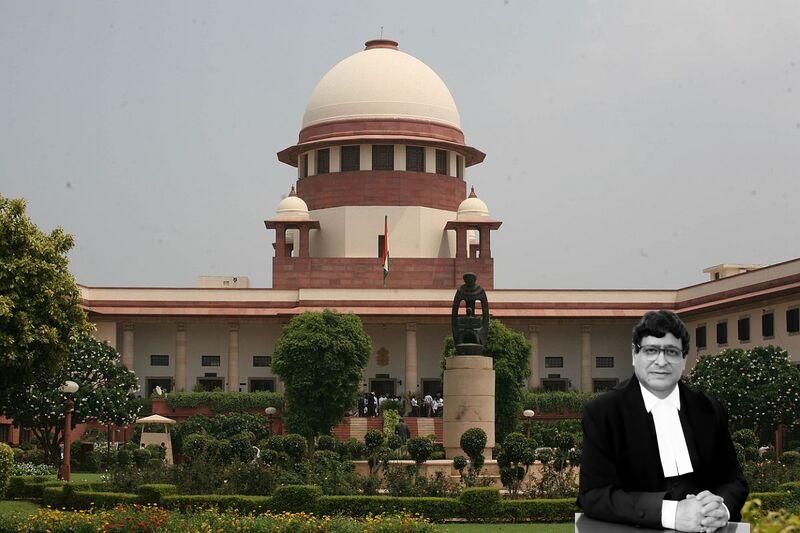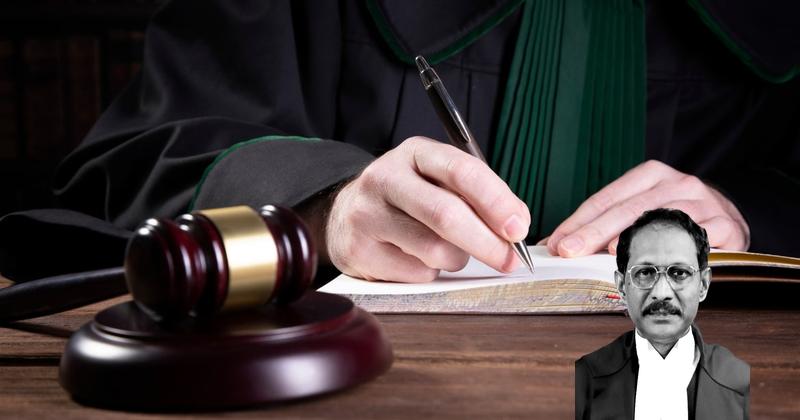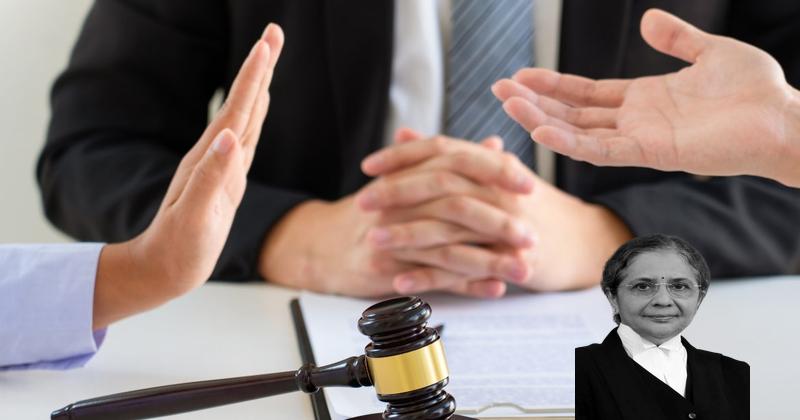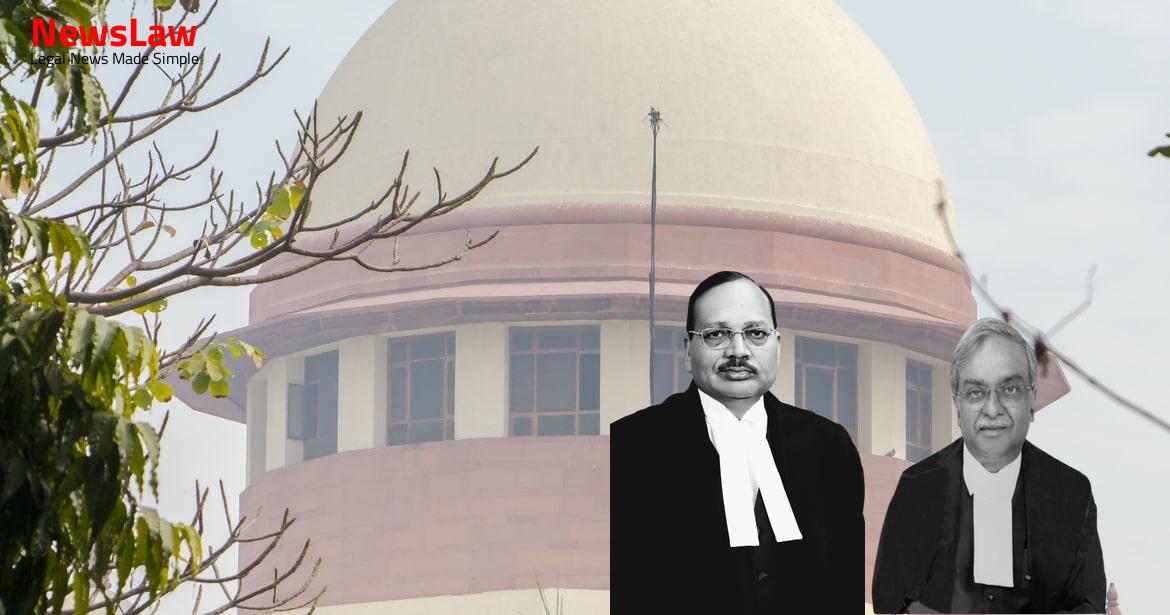There were four accused in the case, which were Gaya Prasad Mishra, Gulab Chandra, Pawan Kumar and Babadeen. The appellant before this Court apart from challenging the impugned order on merits has also raised a claim of being a juvenile at the time of the alleged commission of the crime (dated 01.12.1995), a plea which has been dismissed by the Trial Court and the High Court. Since this plea was raised before this Court as well, this court had asked for a report from the concerned Additional Sessions Judge, Barabanki and consequently a report was filed on an earlier occasion before this Court, to which we shall refer in a while. This incident resulted in grievous injuries on all and ultimately in the death of one Ganga Prasad, brother of the complainant. While having his statement recorded under Section 313 of CrPC the age of the appellant was recorded as 18 years and upon further inquiry the appellant claimed that he was less than 16 years of age at the time of the commission of the offence, i.e., on 01.12.1995. In any case, as per the Family Register of the Gram Panchayat, the appellant would be around 20 years of age at the time of the commission of the offence. The appellant filed a Criminal Revision before the High Court against the said order dated 21.08.1999 passed by the Additional Sessions Judge, Barabanki. Nevertheless, the High Court vide its order dated 07.05.2019, dismissed the Criminal Appeal of all the three accused, including the plea of juvenility raised by the appellant.
3 has raised the point of his juvenility before the trial court, which was dealt with after examining the court witnesses and evidences placed by means of parivar register, radiological report, C.M.O. The order dated 08.10.2021 of this Court reads as under: – “…Learned counsel for the petitioner submits by reference to additional documents that CM No.96164/2012 was filed under Section 391 of the Cr.P.C for taking on record additional documents in the form of transfer certificate showing the date of birth of the applicant as 05.07.1980.
Also Read: https://newslaw.in/supreme-court/standing-orders-vs-cca-rules-a-legal-analysis/
It has been observed that no ground has been taken in the appeal of juvenility of appellant No.3 possibly because a Criminal Revision was filed against the order dated 21.08.1999 being Criminal Revision No.271/1999 which was also dismissed by the High Court on 16.09.1999.
In view of the aforesaid facts and circumstances, we are of the view that the additional documents brought on record ought to have been examined and they require examination as to whether the petitioner can raise the plea of juvenility. The report dated 28.02.2022 was examined by this Court and it was felt that the Trial Court did not examine the Transfer Certificate of the appellant, which was placed before it. The Order of this Court dated 15.07.2022 is as follows: “We have perused the report of the First Additional Sessions Judge, Barabanki dated 28.02.2022 but that report does not analyze the transfer certificate which is the document sought to be relied upon by the petitioner as an additional document before the High Court for which an application had been filed before it.
In the end, it is humbly submitted that the date of birth of Pawan Kumar, right from the first school where he was admitted, up to the last school where he has studied, as per the relevant documents of each school has remained the same i.e., 05.07.1980 (Annexure-1) which has been issued by the Principal of Pre-secondary School Kamela, mentioning his date of birth as 05.07.1980, matches with the date of birth of Pawan Kumar as has been mentioned in the relevant registers/documents of each and every school, where the petitioner has studied at different stages of his education”.
In the said Act, Section 2(h) defined juvenile as follows: “(h) “juvenile” means a boy who has not attained the age of sixteen years or a girl who has not attained the age of eighteen years” In the case of the present appellant, the relevant age apparently was 16 years. Section 2(k) defined the “juvenile” as follows: “(k) “juvenile” or “child” means a person who has not completed eighteenth year of age”
The definition of “juvenile in conflict with law” under Section 2(l), which stood amended in 2006 is as follows: Prior to the 2006 amendment, it reads as follows: (l) “juvenile in conflict with law” means a juvenile who is alleged to have committed an offence.
(b) The 2000 Act would be applicable in a pending proceeding in any court/authority initiated under the 1986 Act and is pending when the 2000 Act came into force and the person had not completed 18 years of age as on 01.04.2001.” Subsequent to the decision in Pratap Singh (supra) certain amendments were made in the 2000 Act.
(2) If the court finds a person to be a juvenile on the date of commission of the offence under sub-section (1), it shall forward the juvenile to the Board for passing appropriate order, and the sentence if any, passed by a court shall be deemed to have no effect. Procedure to be followed in determination of Age.—(1)
In every case concerning a child or a juvenile in conflict with law, the court or the Board or as the case may be the Committee referred to in Rule 19 of these rules shall determine the age of such juvenile or child or a juvenile in conflict with law within a period of thirty days from the date of making of the application for that purpose. In case exact assessment of the age cannot be done, the Court or the Board or, as the case may be, the Committee, for the reasons to be recorded by them, may, if considered necessary, give benefit to the child or juvenile by considering his/her age on lower side within the margin of one year.
(4) If the age of a juvenile or child or the juvenile in conflict with law is found to be below 18 years on the date of offence, on the basis of any of the conclusive proof specified in sub-rule (3), the court or the Board or as the case may be the Committee shall in writing pass an order stating the age and declaring the status of juvenility or otherwise, for the purpose of the Act and these rules and a copy of the order shall be given to such juvenile or the person concerned. Although, during the pendency of the appeal before the Allahabad High Court (Lucknow Bench), the Juvenile Justice (Care and Protection of Children) Act, 2015 had come into force repealing the 2000 Act and subsequent to the 2015 Act, comprehensive and detailed Model Rules relating to “juvenile in conflict with law” known as Juvenile Justice (Care and Protection of Children) Model Rules (hereinafter referred to as ‘JJ Rules, 2016’) were laid down. 679(E)
dated 26th October, 2007 and as amended vide GSR 903(E) dated 26th December 2011, are hereby repealed: Provided that any action taken or order issued under the provisions of the Rules of 2007 prior to the notification of these rules shall, in so far it is not inconsistent with the provisions of these rules, be deemed to have been taken or issued under the provisions of these rules.” Nevertheless, the 2015 Act contains an important Section, Section 25, which reads as follows: “25.
It would mean that what would be applicable in the present case would be the 2007 Rules, including Rule 12 which we have referred above. One important aspect which was missed by the High Court as well as the Additional Sessions Judge in his report dated 28.02.2022, was the provisions of Rule 12 of the 2007 Rules which are applicable for determination of age in the present case and, in particular, the provision under sub-rule (3)(b) of Rule 12 which states that “in the case exact assessment of the age cannot be done, the Court or the Board or, as the case may be, the committee for the reasons to be recorded by them, may, if considered necessary give benefit to the child or juvenile by considering his/her age on lower side within the margin of one year”. The admitted position is that the appellant had not completed his matriculation at the time of the incident in the year 1995 and therefore the only evidence he could place before the authorities was the copy of the admission register of National Inter College and the transfer certificate of the college, which had recorded his date of birth to be 05.07.1980.
The date of birth, however, was not taken to be the correct date of birth in the earlier findings, since the appellant had not produced any certificate before the inquiry officer on the basis of which the date of birth i.e., 05.07.1980 was registered in the school register of National Inter College.
The Additional Sessions Judge, who did not doubt the veracity of any of these documents which were placed before him, has given a categorical finding that what has been consistent is that, in all the schools that he has attended, his date of birth remains the same i.e., 05.07.1980. The school leaving certificate of the first school attended by the appellant which is Primary School, Bhatgawan will be a certificate that is liable to be considered and the certificate is a valid proof of evidence for determination of the age of the appellant.
In any case, a bone ossification test, which is primarily done to determine the age, does not give the precise age but is at best an approximation. State of Bihar, (2008) 15 SCC 223 : (2009) 3 SCC (Cri) 796, that the ossification test is not conclusive for age determination because it does not reveal the exact age of the person, but the radiological examination leaves a margin of two years on either side of the age range as prescribed by the test irrespective of whether the ossification test of multiple joints is conducted. (ii) a hypertechnical approach should not be adopted while appreciating the evidence adduced on behalf of the accused in support of the plea that he was a juvenile and if two views may be possible on the same evidence, the court should lean in favour of holding the accused to be a juvenile in borderline cases; and” This proposition of taking a liberal view and about extending the benefit of juvenility where two views are available has been reiterated by this Court in numerous subsequent decisions such as Mukarrab and Others v. This is in order to ensure that the benefit of the JJ Act, 2015 is made applicable to the juvenile in conflict with law.
Case Title: PAWAN KUMAR Vs. THE STATE OF UTTAR PRADESH
Case Number: Crl.A. No.-003548-003548 / 2023



